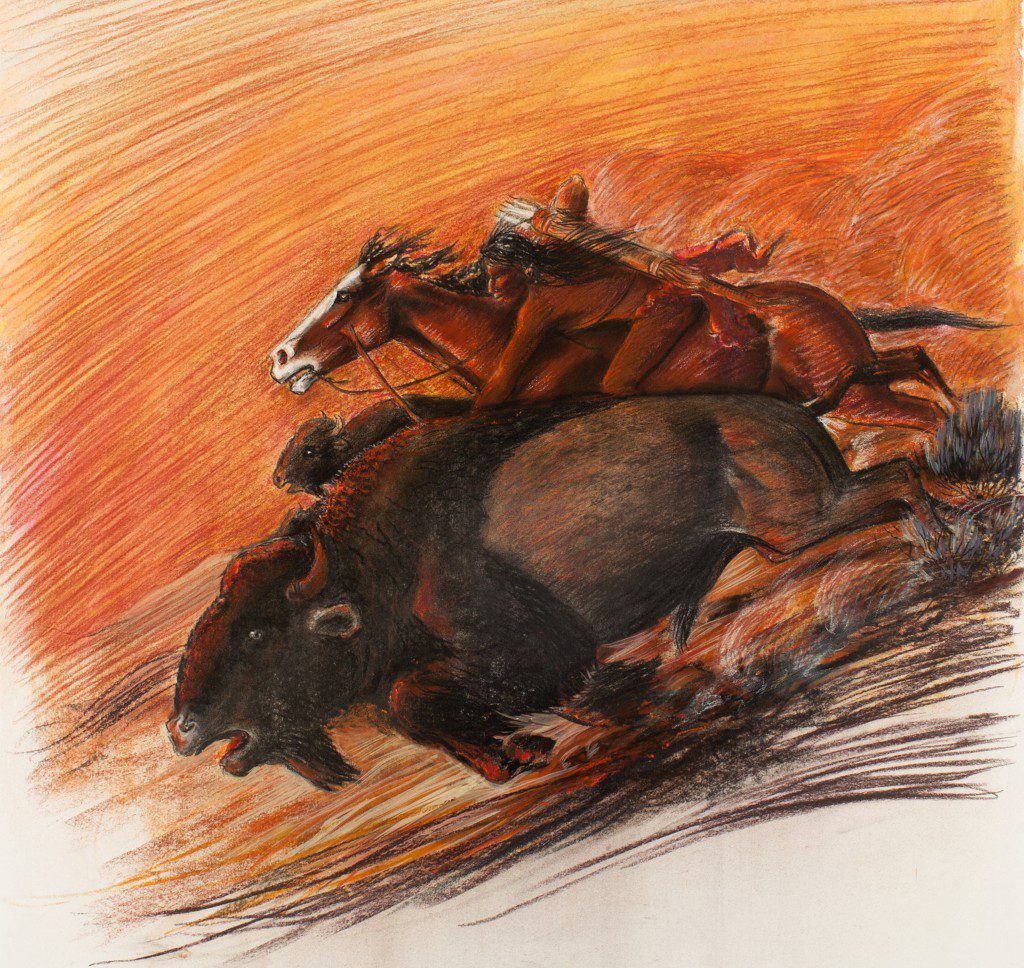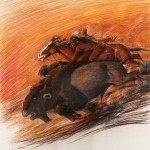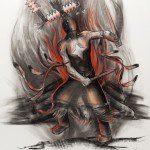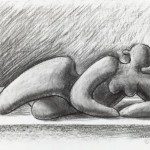Pulling Roots
“It’s my understanding that Haozous means the ‘sound of pulling roots,’ or the ‘sound of pulling away,’” Rushing says. “Beautiful. Beautiful word.”
Houser was born Allan Haozous on June 30, 1914, near Lawton to Sam and Blossom Haozous. He was the first person in his family born free since Geronimo and his band of Chiricahua Apaches surrendered in 1886 and were imprisoned at Fort Sill in western Oklahoma.
He was about 5 years old when he began drawing, around the same time he attended a small school in the town of Boone, says David Rettig, curator of collections for Allan Houser Inc. in Santa Fe, N.M. The company is the Houser family business operation.
“[Houser] told me that … they didn’t have much. They had the farm,” Rettig says. “They didn’t have drawing paper and pencils at home, so he used to borrow sheets of notebook paper from school.”
That lasted until Houser quit school at 13 to work the farm, although there was a brief stint at the old Chilocco Indian School near Newkirk, Okla., a few years later. He was a restless kid looking for a direction for his energies. One day, he found a book on the art of Frederic Remington – an artist of the American West who painted and sculpted – and Houser began replicating the drawings inside, Rettig says. Houser was only 14 or 15 at the time. His art education took a positive turn a few years later when he came across a flier on the wall of the Anadarko Agency Indian Affairs Office. It announced that painting classes would be starting at the Santa Fe Indian School. The young artist was eager for training, so he wrote a letter and submitted a few of his sketches to the school. Houser was accepted, and in 1934, the 20-year-old farm boy set off for Santa Fe alone.
“When he signed up, he thought he was going to learn Beaux Arts, learn to draw like Rembrandt, you know, make landscapes like (J.M.W.) Turner,” Rettig says, “but they took a very low-tech approach. They took a trade school approach to this classroom. That’s what the … Indian school was. They wanted to teach these young students how to make a product, how to make something sellable.”
Under the guidance of Dorothy Dunn, art instructor at the Santa Fe Indian School, Houser grew skilled in the flat, two-dimensional perspective of American Indian painting that became known as the “traditional style.”
“Allan was kind of disappointed that they wouldn’t let him experiment,” Rettig says, “but he was very facile and very good at what he was doing. He was also the only Apache (in the class).”
Despite style restrictions, Houser’s pieces were influenced by Remington’s Old West.
“Not only technically were his pieces exceptional, but the iconography was different,” Rettig continues. “He was doing these Apache mountain spirit dances, he was doing these Apache chase scenes.”
Houser and his work caught the notice of the U.S. Department of Interior, and in 1939, the young artist received the first of five federal commissions to paint large murals. He also married and started a family, moving his wife, Anna, and his sons around the country for exhibition opportunities.



























